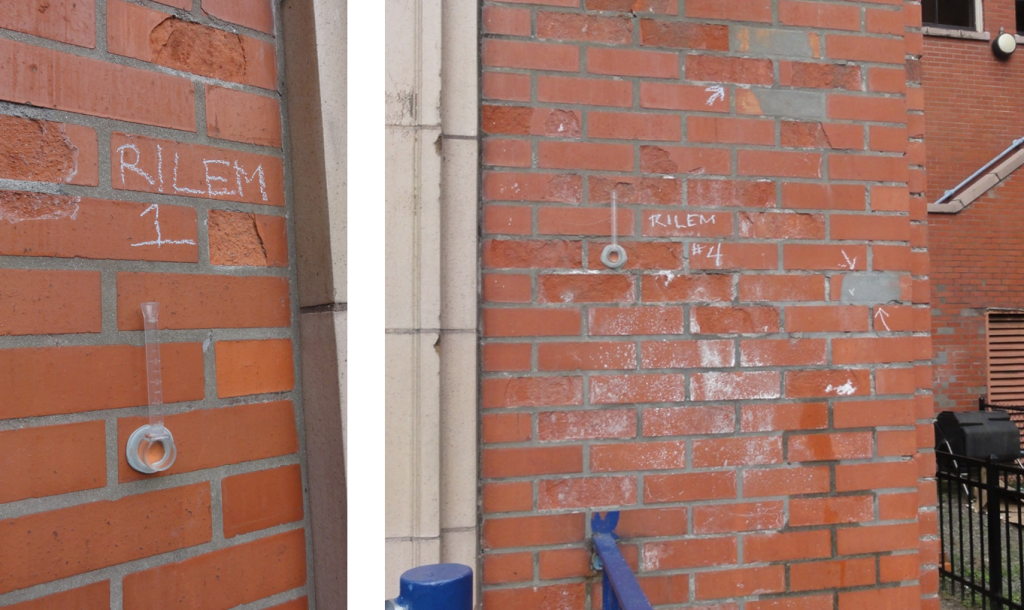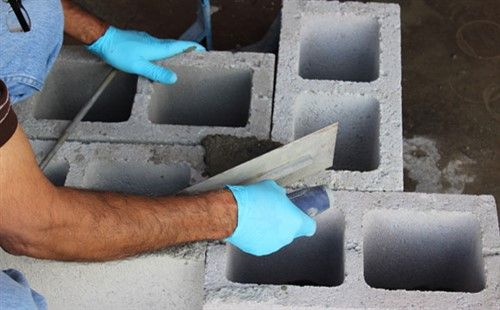Everything about Masonry Field Testing
Table of ContentsThe Facts About Masonry Field Testing RevealedFacts About Masonry Field Testing RevealedThe Buzz on Masonry Field TestingThe Buzz on Masonry Field TestingThe 7-Second Trick For Masonry Field Testing
For D and E wall surfaces, the supports were mounted both in the center of the units (B) and in the mortar (again vertical, straight and also edge) joints. For wall surface C, due to its low mortar joint thickness, the supports were installed only in the middle of the systems. The identification label for the 108 tested anchors is X Y # I where the initial letter (X) suggests the evaluated wall, the second one (Y) the position of the anchor, the third one the embedment deepness (#) and also the 4th one a progressive number (I).4b). This device is a hydraulic instrument in control of variation. Via the turning of mechanical levers, a variation is enforced to the head of the supports and the corresponding pressure on a manometer reads. The pull-out capacity of each of the 108 tested anchors was therefore signed up and also results specified as clarified in the adhering to paragraph.
5. The equivalent effectiveness proportion goes from 0. 12 (h = 90 mm) to 0.
Effectiveness of the anchors set up in walls An as well as B, in headers (a); cots (b); mortar joints (c)Concerning the kinds of failures observed in the experimental project, the complying with settings can be identified: SF moving failing; BPF block pull-out failure; BCF brick-cone failing; MBIF mortar block interface failing. It merits to see that the distance from the support to the reaction points of the device, having to do with 15 centimeters, could conflict with the development of possible brick-cone failures, although this kind of failing is generally unusual for supports in stonework - masonry field testing.
Everything about Masonry Field Testing
Because of the troubles in critical the failing kinds and to the inadequate number of tests successfully completed, these results are omitted from an analytical interpretation. Integrated moving failure as well as block cone failure (a) as well as combined sliding failure and block failing (b).
As we discussed above, Rebound Hammer and Ultrasonic Pulse Velocity are the most widely used NDT methods for evaluating concrete toughness in existing frameworks (Integrated techniques includes a combination of NDT methods for predicting the on-site toughness of concrete. The combination of UPV as well as Rebound hammer has been studied by numerous scientist.Bricks are commonly utilized in the building of various types of Frameworks. Blocks are one of the raw material which is frequently utilized for the construction of the wall surfaces. Bricks must be examined as well as tested on-site prior to utilizing them for construction functions. It is extremely needed that the bricks need to pass all the needed criteria given by the As a civil engineer, you ought to recognize the various which are made use of to examine the high quality of blocks.
It is extremely vital that bricks need to go with numerous tests to understand it's suitability in the building work. There are primarily two kinds of examinations are conducted on the blocks which are the and The Research laboratory Tests are those which are executed in the laboratory with the help of different tools as well as types of equipment - masonry field testing.
, porosity test on blocks, efflorescence examination on blocks, and the dimensional stability test. wikipedia reference Area Tests also play a crucial duty which is really helpful to check the bricks top quality existing on the site.
The Facts About Masonry Field Testing Uncovered
Read: 20 Types of Pipes Piping for Different Use Below, 2 various parts divided the block test. One part laboratory test on bricks and the 2nd part consider a field examination on blocks. All types of examinations on block complete detail and requirements are as adheres to. Inside lab test on block, numerous kinds of test on blocks like Water absorption examination, crushing toughness examination, efflorescence test, and dimensional security test.
The bricks are saturated in water for at space temperature and after that considered. Let its Weight be The portion of water absorption of blocks = As per Indian standards, the quantity of water that is absorbed by the blocks need to not be more than 20% of its Dry weight.


The water absorption for class 2 brick must not be above of its Dry weight. The water absorption for course 3 block need to not be even more than of its Dry weight. Read: Which Concrete Is Finest for Residence Building Different Kind of Concrete as well as Use The crushing strength of brick is determined by utilizing a compression testing machine in the laboratory.
The all the worths of the analyses at the factor of crushing or take down indicates the squashing stamina of the bricks. The minimum compressive strength of block is The quality A brick for the 1st course short have the crushing strength value ranges in between. In the Efflorescence examination the existence of soluble salts is identified.
Facts About Masonry Field Testing Uncovered
After the bricks are entirely dry the proper monitoring of the bricks is done. If there is no grey or white down payment click for info is present on the surface area of the bricks after that it indicates the absence of soluble salts. If there is any white down payment exists on the surface area of the block, then there will certainly be efflorescence and also it is required that block should be treated prior to used in building.
When of the blocks is covered with a thin down payment of salt then the difference remains in When there is a hefty deposit of salt that covers upto of the area of the block surface area then the Efflorescence will remain in When the revealed surface i was reading this of the brick is even more than affected by the hefty down payment of salt, after that the bricks are in the Efflorescence condition.
Read: What Is Superstructures Distinction Between Load-Bearing and Framed Structures In the dimensional stability examination, the bricks are moistened, there is an adjustment in quantity and linear dimension. The resistance to alter of volume is called Dimensional The blocks are saturated with water indicates 0. 02% linear expansion which is normal.
Bricks ought to also show dimensional stability when they are heated up. The solidity test of bricks is utilized to identify the resistance of blocks to abrasion.
9 Simple Techniques For Masonry Field Testing
After making scratches externally of the bricks, if there is any kind of impact is left on the brick, after that the brick is not completely difficult to wear. There ought to not be any impact left on the brick after damaging it with nails. Likewise, Read: Difference Between Fat Lime as well as Hydraulic Lime What Is Fat Lime What Is Hydraulic Lime The sturdiness test is additionally among one of the most vital tests which are generally used to examine the high quality of the blocks on the building site.
In the sturdiness examination, the two blocks are struck with each various other. The block ought to not damage while it was struck with each other but it must you a The metal buzzing sound of the bricks suggests the top quality of the bricks. In the effect examination of the blocks, the block is allowed to drop flat from an elevation of on the ground.
If the block obtains cracked or crushed right into pieces after that, it shows the ideal top quality of the brick. The shape and size of the block must be consistent and also standard size. The shape of the typical brick should be rectangular. The bricks should have uniform colour and their edges need to be directly.
The bricks ought to have a copper colour or reddish colour and also it need to be without splits and also need to have sharp sides. This all the above attributes reveals that the brick is of top quality. The framework of the block need to be small, homogeneous, and also devoid of openings as well as swellings.